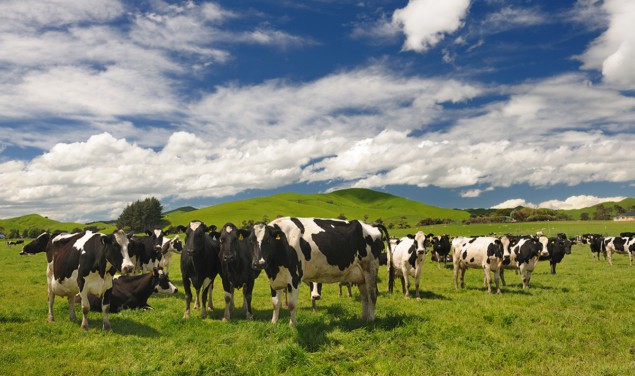
Producing some beef uses 50 times more land and emits 12 times more carbon dioxide equivalent than lower impact beef. That, and the similar differences for other foodstuffs, offers opportunities for mitigating the environmental impact of food, according to analysis that looked at 38,700 farms and 1600 processors, packaging types and retailers worldwide.
“Two things that look the same in the shops can have very different impacts on the planet,” says Joseph Poore from the University of Oxford, UK. “We currently don’t know this when we make choices about what to eat. Further, this variability isn’t fully recognized in strategies and policy aimed at reducing the impacts of farmers.”
Poore and colleague Thomas Nemecek from Swiss agricultural research institute Agroscope assessed the environmental impacts of 40 major foods in a meta-analysis of hundreds of studies. They compiled the most comprehensive database of its type so far.
“Food production creates immense environmental burdens, but these are not a necessary consequence of our needs,” says Poore. “They can be significantly reduced by changing how we produce and what we consume.”
Feeding 7.6 billion people is degrading terrestrial and aquatic ecosystems, depleting water resources and driving climate change, Poore and Nemecek write in Science. Currently, the world’s food supply chain creates around 13.7 billion tonnes of carbon-dioxide equivalents, which is 26% of man-made greenhouse-gas emissions. Agriculture covers 43% of the planet’s ice- and desert-free land, with 87% of this area producing food and the rest dedicated to products such as biofuels, textile crops, wool or leather. And two-thirds of freshwater withdrawals are for irrigation.
Across all the foods the pair examined, one quarter of producers contributed on average 53% of each product’s environmental impacts, the researchers found. That means reducing the impacts of the most harmful production could make a significant difference. Just 25% of beef production, for example, creates roughly 1.3 billion tonnes of carbon-dioxide equivalent and uses around 950 million hectares of land.
The team recommends that food producers use digital tools to assess their environmental impact and discover the options for reducing it. But it’s a complex business when conditions on the ground are so varied.
“One of the key challenges is finding solutions that are effective across the millions of diverse producers unique to agriculture,” says Poore. “An approach to reduce environmental impacts or enhance productivity that is effective for one producer can be ineffective or create trade-offs for another. This is a sector where we require many different solutions delivered to many millions of different producers.”
On low-emission Northern European barley farms, for example, halving land use can increase greenhouse gas emissions per kilogram of grain by 2.5 times, and acidification by 3.7 times.
When it comes to meat, reducing the impact of production may be less effective than cutting consumption altogether. Even low-impact beef producers created 6 times more emissions and used 36 times more land than those growing peas, the study found. And a low-impact litre of cow’s milk needed almost twice as much land and created almost double the emissions as an average litre of soy milk.
For those in the US, where meat consumption is high, a plant-based diet could reduce food’s greenhouse and other emissions by up to 73%, the results showed. Worldwide the drop in food’s greenhouse gas emissions would be 49%. Global agricultural land would also decrease by roughly 3.1 billion hectares, some 76%.
“This would take pressure off the world’s tropical forests and release land back to nature” says Poore.
Alternatively, halving consumption of animal products by avoiding the highest-impact producers would result in 73% of the plant-based scenario’s greenhouse emission reduction. What’s more, reducing use of products such as oils, alcohol, sugar and stimulants by one-fifth by avoiding high-impact producers could cut their greenhouse gas emissions by 43%.
These approaches would require communicating producer – not just product – environmental impacts to consumers, the team says, through environmental labels in combination with taxes and subsidies.
“We need to find ways to slightly change the conditions so it’s better for producers and consumers to act in favour of the environment,” says Poore. “Environmental labels and financial incentives would support more sustainable consumption, while creating a positive loop: farmers would need to monitor their impacts, encouraging better decision making; and communicate their impacts to suppliers, encouraging better sourcing.”



